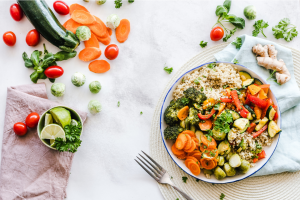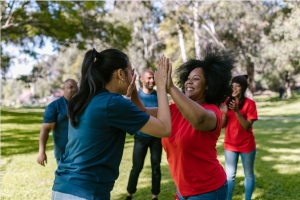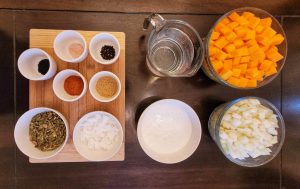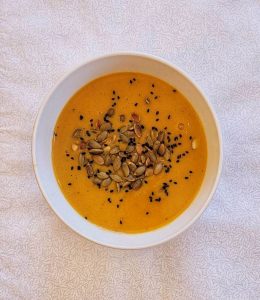 In the fast-paced world we live in, self-care has become increasingly important for maintaining our physical, mental, and emotional well-being. Among the various practices that promote self-care, yoga stands out as a holistic approach that nurtures both the body and mind. The science behind yoga reveals its profound effects on our overall health and wellness.
In the fast-paced world we live in, self-care has become increasingly important for maintaining our physical, mental, and emotional well-being. Among the various practices that promote self-care, yoga stands out as a holistic approach that nurtures both the body and mind. The science behind yoga reveals its profound effects on our overall health and wellness.
At its core, yoga combines physical postures (asanas), breath work (pranayama), and meditation to create a harmonious union between body, mind, and spirit. Research indicates that engaging in regular yoga practice can lead to numerous health benefits. Physically, yoga promotes better posture while also improving flexibility, strength, and balance, reducing the risk of injury. Studies have also shown that yoga can help alleviate chronic pain conditions such as lower back pain and arthritis.
 Beyond its physical benefits, yoga has a profound impact on mental and emotional well-being. Through mindful movement and breath awareness, time on the mat helps reduce stress, anxiety, and depression. It encourages present-moment awareness, allowing practitioners to cultivate a sense of inner peace and calm. On a physiological level, yoga can regulate the body’s stress response system, leading to lower levels of cortisol (“the stress hormone”) and greater feelings of relaxation and calm.
Beyond its physical benefits, yoga has a profound impact on mental and emotional well-being. Through mindful movement and breath awareness, time on the mat helps reduce stress, anxiety, and depression. It encourages present-moment awareness, allowing practitioners to cultivate a sense of inner peace and calm. On a physiological level, yoga can regulate the body’s stress response system, leading to lower levels of cortisol (“the stress hormone”) and greater feelings of relaxation and calm.
Research suggests that yoga stimulates the parasympathetic nervous system, also known as the “rest and digest” response. This counteracts the effects of the sympathetic nervous system, responsible for the body’s stress response (fight, flight or freeze). By promoting relaxation and reducing physiological arousal, the benefits of yoga ripple out to help balance hormone levels, improve digestion, and boost immune function.
 Yoga has also been found to enhance cognitive function and mental clarity. Regular yoga practice has been associated with improvements in memory, concentration, and attention span. The meditative aspect of yoga promotes mindfulness, which can help individuals manage negative thought patterns and develop a more positive outlook on life.
Yoga has also been found to enhance cognitive function and mental clarity. Regular yoga practice has been associated with improvements in memory, concentration, and attention span. The meditative aspect of yoga promotes mindfulness, which can help individuals manage negative thought patterns and develop a more positive outlook on life.
 In essence, the science behind yoga underscores the plethora of benefits for overall health and well-being. By incorporating yoga into our self-care routines, we can cultivate a greater sense of balance, resilience, and vitality in our lives. As we tune into the wisdom of our bodies and minds through yoga, we empower ourselves to lead healthier, happier, and more fulfilling lives.
In essence, the science behind yoga underscores the plethora of benefits for overall health and well-being. By incorporating yoga into our self-care routines, we can cultivate a greater sense of balance, resilience, and vitality in our lives. As we tune into the wisdom of our bodies and minds through yoga, we empower ourselves to lead healthier, happier, and more fulfilling lives.
Ready to experience the transformative benefits of yoga? Click here to find a class suitable for you and start your journey toward improved well-being today!


 March marks the annual celebration of Nutrition Month, a time dedicated to raising awareness about the importance of healthy eating and making informed food choices. In the pursuit of well-being, the intertwining of nourishing our bodies and nurturing our overall health holistically is paramount. By recognizing the significance of both aspects, we can support overall health and well-being, while also recognizing the interconnectedness of mind and body.
March marks the annual celebration of Nutrition Month, a time dedicated to raising awareness about the importance of healthy eating and making informed food choices. In the pursuit of well-being, the intertwining of nourishing our bodies and nurturing our overall health holistically is paramount. By recognizing the significance of both aspects, we can support overall health and well-being, while also recognizing the interconnectedness of mind and body. Nutrition is a dynamic field where discoveries are constantly being made, challenging old diet theories many have lived by. This ever-evolving landscape can be overwhelming, but having a health coach can help you sort through the clutter and find the best approach for you.
Nutrition is a dynamic field where discoveries are constantly being made, challenging old diet theories many have lived by. This ever-evolving landscape can be overwhelming, but having a health coach can help you sort through the clutter and find the best approach for you.  During nutrition month, let’s not only focus on nourishing our bodies but also nurturing our health holistically. Whether it’s engaging in mindful eating practices, practicing gratitude, or incorporating stress-relieving activities into our daily routines, let’s prioritize the
During nutrition month, let’s not only focus on nourishing our bodies but also nurturing our health holistically. Whether it’s engaging in mindful eating practices, practicing gratitude, or incorporating stress-relieving activities into our daily routines, let’s prioritize the  Winter can be a challenging time for many of us. The shorter days, colder temperatures, and lack of sunlight can all contribute to feelings of sadness and lethargy. But fear not! There are plenty of strategies you can use to lift your spirits and embrace the season with positivity.
Winter can be a challenging time for many of us. The shorter days, colder temperatures, and lack of sunlight can all contribute to feelings of sadness and lethargy. But fear not! There are plenty of strategies you can use to lift your spirits and embrace the season with positivity. #1. Drop the punishment and reward system.
#1. Drop the punishment and reward system. Look beyond short term satisfaction and identify the deeper reasons driving your goals. When you dig a bit deeper to figure out the real reason behind your goal you’ll unleash a bigger drive for follow through. An example could be cleaning up your diet in an effort to look good for your trip down south for spring break. It’s likely your dedication to clean eating after you return from your trip will not be as strong as it was before you went on your vacation. However, if you associate your new routine with bigger picture ideals, such as feeling lighter and having plenty of energy to play with your kids, or being happy and feeling more confident in yourself, you’re more likely to continue your new healthy habits. Connecting your goals to fundamental values and long term aspirations will strengthen your motivation and endurance.
Look beyond short term satisfaction and identify the deeper reasons driving your goals. When you dig a bit deeper to figure out the real reason behind your goal you’ll unleash a bigger drive for follow through. An example could be cleaning up your diet in an effort to look good for your trip down south for spring break. It’s likely your dedication to clean eating after you return from your trip will not be as strong as it was before you went on your vacation. However, if you associate your new routine with bigger picture ideals, such as feeling lighter and having plenty of energy to play with your kids, or being happy and feeling more confident in yourself, you’re more likely to continue your new healthy habits. Connecting your goals to fundamental values and long term aspirations will strengthen your motivation and endurance. Avoid setting up safety nets that undermine your commitment to your primary goal. Having a back-up plan can dissuade you from committing fully. Let’s say you want to do the 6am bootcamp on Monday, Wednesday and Fridays, but tell yourself if you miss one day, then you can make it up by going for a walk on the weekend. The walk then becomes a very convenient excuse to not get up for Friday morning bootcamp when the alarm goes off. In reality, either activity is great, but it’s the act of going back on your word to yourself that hurts you in the end. By eliminating alternatives, you’ll be more inclined to persist in your original plan, while developing a sense of pride and self-respect, rather than succumbing to convenient excuses.
Avoid setting up safety nets that undermine your commitment to your primary goal. Having a back-up plan can dissuade you from committing fully. Let’s say you want to do the 6am bootcamp on Monday, Wednesday and Fridays, but tell yourself if you miss one day, then you can make it up by going for a walk on the weekend. The walk then becomes a very convenient excuse to not get up for Friday morning bootcamp when the alarm goes off. In reality, either activity is great, but it’s the act of going back on your word to yourself that hurts you in the end. By eliminating alternatives, you’ll be more inclined to persist in your original plan, while developing a sense of pride and self-respect, rather than succumbing to convenient excuses. Break down your overarching goal into manageable tasks and celebrate each small victory. For example, you may want to go gluten/ dairy free, or transition to a non-GMO or vegetarian diet. This objective can be broken down into smaller tasks, such as planning out a menu for the week, clearing out leftovers from the fridge, setting aside items that can be donated or cooked and brought to gatherings, researching labels in one grocery store at a time, and so on. Crossing off a smaller task each day helps track your progress. Paying attention to the details and acknowledging progress reinforces your motivation and momentum.
Break down your overarching goal into manageable tasks and celebrate each small victory. For example, you may want to go gluten/ dairy free, or transition to a non-GMO or vegetarian diet. This objective can be broken down into smaller tasks, such as planning out a menu for the week, clearing out leftovers from the fridge, setting aside items that can be donated or cooked and brought to gatherings, researching labels in one grocery store at a time, and so on. Crossing off a smaller task each day helps track your progress. Paying attention to the details and acknowledging progress reinforces your motivation and momentum. View setbacks as opportunities for growth and resilience. Perhaps your business didn’t do as well this year, or you had to shut doors entirely. This doesn’t mean you should give up entirely on your dream; persist in your efforts to learn from the experience, adapt your approach and move forward. Remind yourself that all action leads to results, and some results are failure; in which case, you’ve gathered information on what to change and learn from for next time. Near wins serve as reminders of your capability and fuel your determination to conquer future challenges. Be compassionate with yourself and use setbacks as stepping stones toward eventual success.
View setbacks as opportunities for growth and resilience. Perhaps your business didn’t do as well this year, or you had to shut doors entirely. This doesn’t mean you should give up entirely on your dream; persist in your efforts to learn from the experience, adapt your approach and move forward. Remind yourself that all action leads to results, and some results are failure; in which case, you’ve gathered information on what to change and learn from for next time. Near wins serve as reminders of your capability and fuel your determination to conquer future challenges. Be compassionate with yourself and use setbacks as stepping stones toward eventual success. ‘Tis that time of year once again—the season of silver bells, hustle and bustle, holiday lights aglow, marked by friends and family gathering, and of course, an elaborate production of delectable treats! The holidays offer a chance to enjoy the company of loved ones, take part in traditions, practice gratitude, and indulge in festive foods together. However, navigating this period can be a challenge for many, with some either restricting or overindulging in their favorite culinary delights. Embracing mindfulness can be the key to fostering a healthier relationship with food and enhancing our overall eating experience. Below are some suggestions that you may find helpful in terms of discovering how you can relish the foods you adore (guilt-free!) throughout the holiday season!
‘Tis that time of year once again—the season of silver bells, hustle and bustle, holiday lights aglow, marked by friends and family gathering, and of course, an elaborate production of delectable treats! The holidays offer a chance to enjoy the company of loved ones, take part in traditions, practice gratitude, and indulge in festive foods together. However, navigating this period can be a challenge for many, with some either restricting or overindulging in their favorite culinary delights. Embracing mindfulness can be the key to fostering a healthier relationship with food and enhancing our overall eating experience. Below are some suggestions that you may find helpful in terms of discovering how you can relish the foods you adore (guilt-free!) throughout the holiday season! Engage all your senses: Whether you’re savouring a main course, indulging in dessert, sipping coffee, or mingling at a wine and cheese party, immerse yourself in the experience using your senses. Pay attention to the texture, temperature, scent and flavours of the food. Notice how the food is looks and is presented.
Engage all your senses: Whether you’re savouring a main course, indulging in dessert, sipping coffee, or mingling at a wine and cheese party, immerse yourself in the experience using your senses. Pay attention to the texture, temperature, scent and flavours of the food. Notice how the food is looks and is presented.
 More Insights into Mindfulness: While mindfulness is beneficial throughout the year, its practice can be particularly valuable during the holidays. Continue honing these skills into the new year, remembering that food is a connects us to others, has value in traditions, and is a source of celebration, rather than shame or guilt. This holiday season, create space for your favourites with gratitude and see what that space gives back to you.
More Insights into Mindfulness: While mindfulness is beneficial throughout the year, its practice can be particularly valuable during the holidays. Continue honing these skills into the new year, remembering that food is a connects us to others, has value in traditions, and is a source of celebration, rather than shame or guilt. This holiday season, create space for your favourites with gratitude and see what that space gives back to you.
 This is one of my favourite soups of all time! The slight heat of the berbere and ginger paired with the creaminess of the coconut and squash is a delightful combo, leaving you with a cozy feeling. Also, black cumin is known to help with inflammation, digestion issues and helps fight infection; with those benefits, why not give it a try? As colder weather approaches, I thought it’d be a good recipe to share.
This is one of my favourite soups of all time! The slight heat of the berbere and ginger paired with the creaminess of the coconut and squash is a delightful combo, leaving you with a cozy feeling. Also, black cumin is known to help with inflammation, digestion issues and helps fight infection; with those benefits, why not give it a try? As colder weather approaches, I thought it’d be a good recipe to share. Heat coconut oil in a large pot over medium heat. Sautee onions and ginger until they become translucent. Add berbere and cubed squash and cook for 4-5 mins while stirring well. Add water, coconut milk and salt and pepper to taste and cook for 30 minutes.
Heat coconut oil in a large pot over medium heat. Sautee onions and ginger until they become translucent. Add berbere and cubed squash and cook for 4-5 mins while stirring well. Add water, coconut milk and salt and pepper to taste and cook for 30 minutes. Maybe I’m biased, but supporting local farmers is something I’m passionate about. When you support local farmers and shop at farmers’ markets, you are helping them make a living. In turn, they continue to provide healthy, wholesome food to families in your community.
Maybe I’m biased, but supporting local farmers is something I’m passionate about. When you support local farmers and shop at farmers’ markets, you are helping them make a living. In turn, they continue to provide healthy, wholesome food to families in your community.